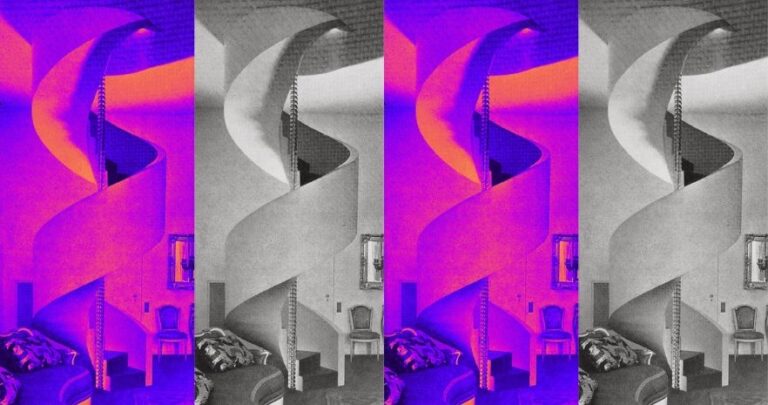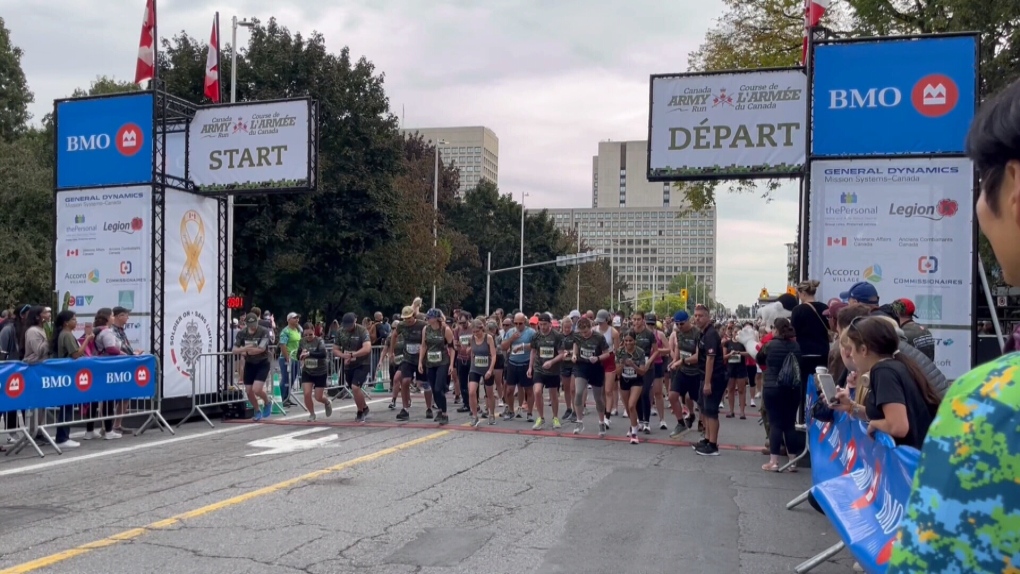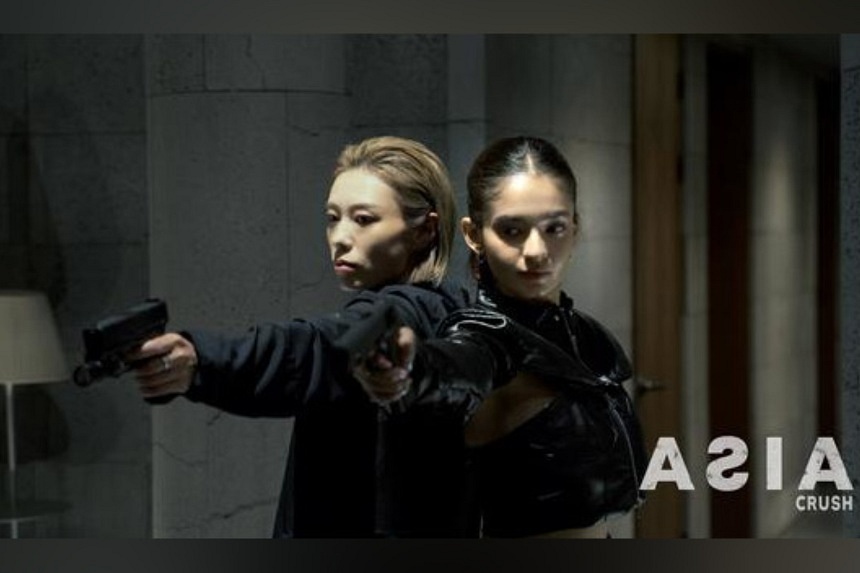In the 1920s, Irish designer Eileen Gray built an exquisite Modernist villa on the south coast of France, an elegant, sensual house that critiqued the ideas of (in)famous architect Le Corbusier. The house was an instant sensation, and Corb, a friend of Gray’s partner, soon visited. He stayed more and more often and became obsessed with the place—or with Gray herself? One day he began to paint in the villa, to paint the villa, covering its white walls with gaudy sexual murals.
He built a cabin for himself next door, another set of cabins behind, and gradually he erased Gray’s name from the place. It was an infamous act of vandalism by a quintessential male monster of art. Gray considered her villa the shell of its occupants: Corb as good as tattooed his paintings right on her skin.

A century later, Claire Dederer asked the excellent question, What do we do with the art of monstrous men? Corb’s art was all over Gray’s villa, yet, horribly, it’s largely what saved the house decades later. She’d fled when he began to coopt it, and after he died, it passed through several owners and began falling apart. Corb’s paintings, though: had to be protected.
So, what to do with the art of this monstrous man? Oh, live with it all over you. What to do with , though: this is what interested me when I decided to write a book. How to turn into art itself this monstrous man and his act? How to understand him? What cocktail of envy, passion, arrogance, and made him do what he did? How to elevate her beyond this one insult? Lots to research, given all that both Gray and Corb produced.
Their books, letters, buildings, paintings, designs for chairs or rugs; their personal lives beyond art and idea. And, of course, the place. The compound of Gray’s villa and Corb’s is now a protected World Heritage site, but when I first visited twenty years ago, you could walk up from the pebbled cove and right into his cabin.
Her house wasn’t open to viewing, though, and impossible to get near. To see as much as possible, I bought an orange blow-up raft, pushed off, paddled out. After a year or so I had a mass of material: figures, places, moments, concepts, feelings: aka, the substance of “story.
” But this has nothing to do with , how to model that mass into a novel. How would the “story” be focalized and told? Through whose eyes? In what voice? What shape? And, above all, how render a story with such grim dynamics: a monster and a victim? One way of looking at is narratological: the series of incidents in chronological order. At the shortest, I’d cover from 1925, when Gray built the house, to 1965, when Corb died swimming in the cove below.
Or I could go back to his youth and hers, how they got to be what they were. But even the shorter version would be tedious if linear. So next came the question of this story.
Where in those forty years to focus, letting the rest drop away? How to render enough past to make the present mean something and be urgent? It could easily be sexy. Focus on Gray’s glamorous days in 1920s Paris, for instance, her affair with a famous chanteuse, strolling with a pet panther. Or create scenes luxuriating in her righteous outrage after Corb desecrated her place.
But this felt banal; I wanted to resist what was obviously sexy. More intriguing was the aftermath of the act, how it might burn through and have final consequences. The novel would focus on the last week of Corb’s life, when both he and Gray were back in the place she’d long abandoned.
So, the novel would cover just one week in the lives of two old people, and that week had to hold everything important about the forty years before. A fossil: a super-compacted present holding depths of past. But how would that past in the present? I wrote a first draft, a second, with loads of backstory lumped in by a remote narrator.
Lugubrious. Plus the core dynamic still paralyzed me: art-monster man, violated woman. “Me Too” rolled through as I pondered how to write this, and at about the time that Claire Dederer asked her question, I was helping to fell one such monstrous art-man.
Monstrous, yes, but human: he was also pitiful, and could be kind. So one trace that “Me Too” left with me: a need for nuance. A monster is interesting only if complex and vulnerable.
A classical term for this is , Horace’s phrase for Cleopatra—horrifying, fascinating, tragic. My Corb would be bombastic and outrageous, yes, but with rich veins of weakness. I wanted to peer into his caves—his brilliant, outlandish ideas about women, for instance, and about sex, purity, color, form—to divine why he to do what he did.
I wanted to live in his body and feel when he fucked or masturbated or shat or ate or drank or sank to the floor in a sweaty morning squat. And Gray would defy victimhood, be maddeningly aloof, her eyes fixed on far more than this one appalling insult. Getting closer to a soul, maybe, but no form.
Years were going by! I put the project away, wrote others. A short nonfiction novel where the mind’s motions mattered more than incident—wandering, questioning. Then, ever more preoccupied by narrative shape, I wrote a craft book, , about resisting the classic narrative arc, with its masculo-sexual insistence on tension until climax.
Other patterns recur in nature: meanders, spirals, radial shapes, cells. Animals built in these shapes, as did we. Why wouldn’t they structure our stories? A meandering narrative starts at one point and moves elsewhere, but slowly; a spiraling story moves with regular, perhaps obsessive, repetitions, as it winds to an urgent core: often of memory.
I realized that these ideas might actually mean something for my own self and the novel smoldering in my laptop for a decade. Memory: I should focus closely on how the incidents of the villa still dwelled and were potent Gray and Corb; how memory could be active and transform the present. The narrator should not be remote but amphibiously within and beside both figures, watching memory work inside each.
For her, the memory of the crime would be obsessive, but she’d spun through it so many times that she now, finally, would spin herself free. But for him, ah: memory would finally begin twisting its way out. He would face the past at last, finally see what he’d done, and then—well.
This shift in narrative perspective gave me a signal for style, too: the narrating voice would dissolve into the cycling, streaming consciousness of each character: Modernist. And if this novel would be about memory, about an obsessive, relentless winding into a core, then the shape was before my eyes: a spiral. The central figure of Gray’s villa is in fact a spiral, the staircase that screws the house into rock; I had already written the most virulent scene between Corb and Gray at the bottom of that spiral staircase.
A spiral is also the shape he used to design his cabin. Of a spiral! So, the nebulous mass of figure, place, feeling, and story finally began to find form. Corb and Gray would go about their business that week working, drawing, talking, eating, but inwardly winding their ways toward the hot core between them, the moment on the spiral stair that made him take up his brush in a rage.
The narrative would alternate between them like a double helix, the two winding about each other even as they wind their ways into the past. Bit by bit Corb would be compelled to step deeper into his dark, inner maze, until there, in horror, he’d find himself: the monster. __________________________________.



















